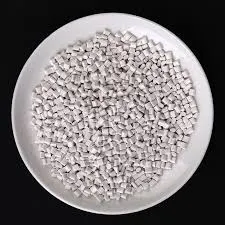The Chemical API Manufacturing Process An Overview
Active Pharmaceutical Ingredients (APIs) are vital components in the pharmaceutical industry, serving as the primary ingredients responsible for the medicinal effects of drugs. The manufacturing process of chemical APIs is complex, involving several stages that ensure the purity, efficacy, and safety of the final product. This article provides an overview of the key steps involved in the chemical API manufacturing process, highlighting the significance of quality control and regulatory compliance.
Overview of API Manufacturing Process
The API manufacturing process typically begins with the synthesis of the chemical compound. This can be achieved through various methods, including chemical synthesis, fermentation, and extraction. The choice of method depends on the specific properties of the compound being produced and its intended use in pharmaceuticals.
1. Synthesis
Chemical synthesis is the most common method for producing APIs. This process involves the combination of raw materials through a series of chemical reactions. The synthesis route must be carefully designed to ensure high yields while minimizing by-products and waste. This can include multiple steps, such as functional group transformations, coupling reactions, and purification procedures.
Fermentation, on the other hand, is used primarily for biologically derived APIs. In this process, microorganisms such as bacteria or yeast are employed to convert raw substrates into active compounds. This method is particularly suitable for producing complex molecules, such as antibiotics, that occur naturally.
Extraction is another technique used to isolate APIs from natural sources. For instance, plant materials may be processed to extract valuable compounds like alkaloids or flavonoids. This process often involves the use of solvents and various extraction techniques to obtain pure substances.
2. Purification
chemical api manufacturing process

Once synthesized, the API must undergo purification to remove undesired impurities or by-products from the reaction. Common purification techniques include crystallization, distillation, and chromatography. Each method has its advantages and is chosen according to the physical and chemical properties of the API.
Crystallization is often favored due to its ability to produce high-purity solid products. Distillation is used for separating components based on their boiling points, while chromatography can effectively separate compounds in a mixture based on their interactions with the stationary phase.
3. Formulation
After purification, the API is typically formulated into a dosage form suitable for administration. This may involve combining the API with excipients – inactive substances that aid in drug formulation. The formulation process ensures that the drug is delivered effectively and safely to patients, considering factors such as stability, bioavailability, and controlled release properties.
4. Quality Control and Assurance
Quality control (QC) and quality assurance (QA) are critical components of the API manufacturing process. Throughout the entire production chain, stringent QC measures are implemented to test the purity, potency, and stability of the APIs. Regulatory compliance with guidelines set by authorities such as the Food and Drug Administration (FDA) or the European Medicines Agency (EMA) is essential to ensure that products meet the required standards for safety and effectiveness.
Analytical techniques, such as High-Performance Liquid Chromatography (HPLC), Mass Spectrometry (MS), and Nuclear Magnetic Resonance (NMR), are commonly employed to characterize and verify the quality of the manufactured APIs.
Conclusion
The manufacturing of chemical APIs is a multifaceted process integral to the pharmaceutical industry. From synthesis and purification to formulation and quality assurance, each stage plays a significant role in the development of safe and effective medicinal products. As the demand for new and innovative therapies continues to rise, maintaining stringent manufacturing practices and adhering to regulatory standards will remain paramount in ensuring the health and well-being of patients globally.

